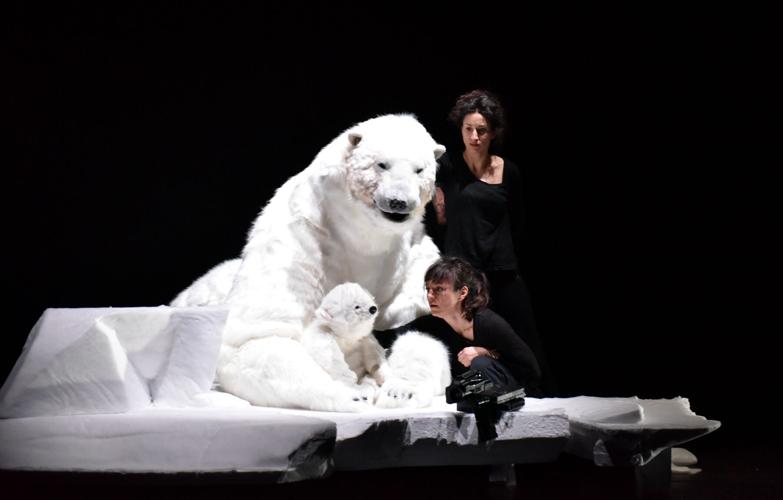“Dimanche” might just be the most interesting piece of theater you’ll see on a Tucson stage.
But you might have a hard time describing it to your friends.
There’s impeccably timed, fluid choreography, but no one dances.
There’s inexplicable imagery and illusion, but it doesn’t quite rise to the level of a magic show.
There’s comedy and music, but it’s neither a musical nor a comedy.
And with the exception of one scene where a trio of actors speaks muted French — we’re not quite sure if they are speaking full sentences or gibberish, and that’s intentional — there’s no story-connecting dialogue.
But look at “Dimanche” as a whole and there is a story, one told in a magical way that will make you laugh, make you think and make you wonder just how in the heck did they do it.
Tucson is one of three American cities to present the Belgium-based Chaliwaté Company and Focus Company piece, which was created and directed by Julie Tenret, Sicaire Durieux and Sandrine Heyraud, with Or Muriel Legrand, Thomas Dechaufour, Shantala Pèpe and Christine Heyraud. The 70-minute performance presented by Arizona Arts Live continues with shows at 2 and 8 p.m. Saturday, April 29, at the University of Arizona’s Tornabene Theatre.
“Dimanche” at its core is the story of mankind’s inability to understand or appreciate climate’s natural inclinations or disasters. It takes us to the snowy tundra of the Arctic as explorers navigate the rutty, icy landscape in a van. OK, there is no van, but the three characters bounce and jolt to the soundtrack of Paul Simon’s “50 Ways to Leave Your Lover” as one of them steers, the middle passenger holds the rear-view mirror complete with a dangling air freshener and a third navigates the thermos and other distractions.
Dimanche observes the ingenuity and stubbornness of humans as they try to preserve their day-to-day habits, going to absurd extremes to keep up a sense of normalcy despite the chaos of an ecological collapse.
Catch it now through April 29 at Tornabene Theatre.
We tag along with a news crew filming on an iceberg as it begins cracking. We hear the crackle as the crew gingerly sidesteps the widening gaps, making their way to what they think is safer ground. When the crackling sound grows ominous, the reporter and sound engineer climb on the cameraman, who turns the lens on the trio. His video of the ice gash growing into a canyon shows up on the screen on stage and we get to see the trio get sucked into the icy waters.
The video imagery serves as a cinematic effect as well as a transition to impressive stage sets. When the video goes off and light returns to the darkened stage, we find ourselves in another climate situation and space including the arctic as a mother polar bear tries to shield her cub as their home on the ice is broken into pieces courtesy of climate change and a sweltering house where the residents blast fans to no avail and watch as their home literally melts from the heat.

Puppeteers brought to life a polar bear and her cub in a heart-breaking scene of “Dimanche.”
The bears and the elderly woman in the home were puppets, but we don’t have an answer for the melting furniture — tables and chairs, a hat rack and a record spinning on a player — which bent and contorted as if they were truly melting.
We also can’t explain how a sleeping man was floating in the water with his head on a pillow while fish and a shark appeared on the hunt.
Or how a tornado ravished a two-story home, sending a bird to its demise through a couple’s front door — yes, that same bird returned to the couple’s dinner table moments later.
Or how vicious winds whipped the residents off their feet and into the storm’s eye.
Or how a scavenger/filmmaker rowing a boat in the tornado’s aftermath plucked a teapot from what our reasonable minds assured us was a dry stage and yet the pot was dripping wet.
“Dimanche” might not have had much dialogue, but it magically and wonderfully spoke volumes.






